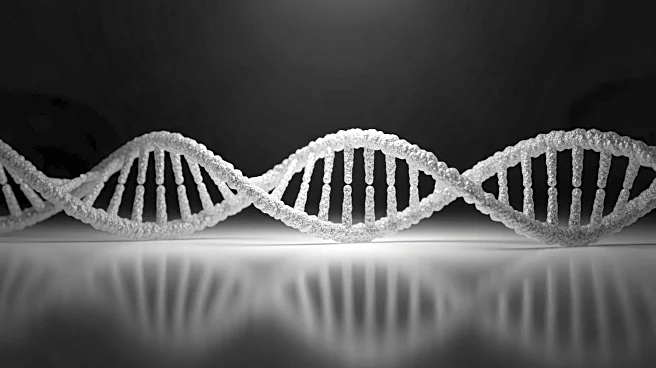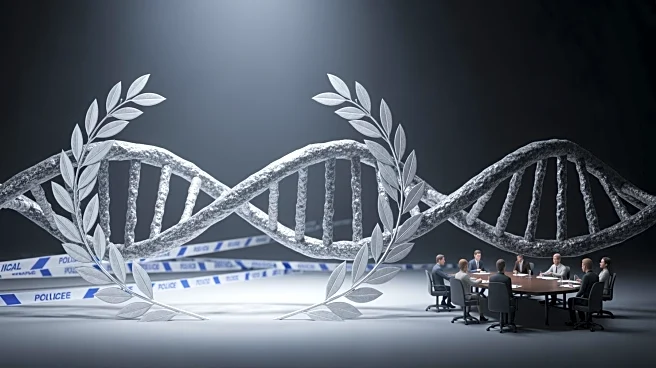What's Happening?
A letter to the editor emphasizes the crucial role of British chemist Rosalind Franklin in the discovery of the DNA double helix structure, which led to James Watson's Nobel Prize in 1962. Franklin's Photograph 51 was pivotal in demonstrating that DNA was a double helix,
contrary to the triple helix theory proposed by Linus Pauling. Despite her significant contribution, Franklin did not receive the Nobel Prize as it is not awarded posthumously, and she passed away in 1958. James Watson, who had previously described Franklin unfavorably, later acknowledged her indispensable work in determining the DNA structure.
Why It's Important?
The recognition of Rosalind Franklin's contribution underscores the importance of acknowledging the collaborative nature of scientific discoveries and the often overlooked contributions of women in science. Franklin's work was fundamental to the understanding of DNA, which has had profound implications for genetics, medicine, and biotechnology. Highlighting her role challenges the historical narrative that has predominantly credited male scientists, promoting a more inclusive recognition of scientific achievements.













